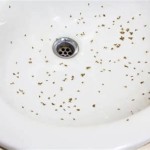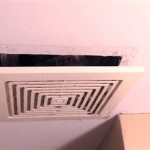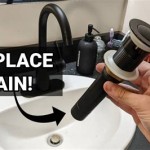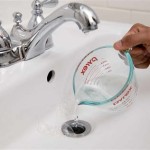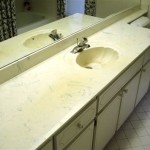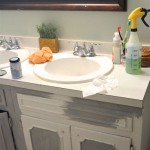Single Handle Bathroom Faucet Won't Turn Off: Troubleshooting and Solutions
A malfunctioning bathroom faucet, especially one that won't turn off completely, can be a frustrating and wasteful problem. Water continuously dripping or running can lead to increased water bills, potential flooding, and even damage to your bathroom. While the issue may seem daunting, it's often manageable with some basic troubleshooting and repair skills. This article will guide you through the common causes and solutions for a single-handle bathroom faucet that refuses to shut off completely.
1. Cartridge Problems: The Heart of the Faucet
The cartridge, a small, cylindrical component inside the faucet's handle, is responsible for controlling water flow. It houses a ceramic disc with internal seals that regulate water flow when the handle is turned. Over time, these seals can wear out, become damaged, or accumulate debris, leading to a faulty cartridge. If you suspect the cartridge is the issue, you should:
-
Inspect the Cartridge:
Carefully remove the handle and expose the cartridge. Examine it for wear, cracks, or debris. -
Replace the Cartridge:
If the cartridge shows signs of damage, replace it with a new one. Ensure you purchase a cartridge compatible with your faucet model.
Replacing a cartridge is typically a straightforward process, but it may require some technical knowledge and tools. If you're unfamiliar with plumbing repairs, consider consulting a professional plumber.
2. Stem and O-ring Issues: The Power of Seals
The stem is a rod connected to the cartridge that controls the movement of the internal seals. O-rings, small rubber rings around the stem, ensure a tight seal when the handle is in the off position. When these components fail, water can leak through the faucet. To check for stem and o-ring problems, follow these steps:
-
Examine the Stem:
Inspect the stem for signs of wear, corrosion, or damage. -
Replace the O-rings:
If the o-rings are worn, cracked, or missing, replace them with new ones. You can typically find replacement o-rings at hardware stores.
Remember, a faulty stem may require replacement, which can be more complex than replacing a cartridge. If you are unsure about replacing the stem, seek assistance from a professional.
3. Debris and Mineral Buildup: The Enemy of Flow
Over time, mineral deposits from hard water or debris from the water supply can accumulate within the faucet, interfering with the smooth operation of the cartridge and stem. To address this, follow these steps:
-
Clean the Faucet:
Use a cleaning solution designed for faucets and follow the manufacturer's instructions. This will help remove any mineral deposits or debris present. -
Flush the Lines:
If the issue persists, you may have a broader problem with mineral buildup in your water lines. Consider flushing your water lines to remove the buildup.
While these steps may solve the issue, if the problem persists after cleaning and flushing, it's advisable to seek professional help to diagnose and repair the faucet.
Remembering to regularly clean and maintain your faucet, especially in areas with hard water, can help prevent issues with the cartridge, stem, and o-rings, ensuring your faucet operates smoothly for years to come.

Fixing Faucets How Do I Fix Water That Keeps Running In A Tub Faucet

How To Turn Off A Faucet That Keeps Running

Bathroom Handle Stiff Or Difficult To Operate

Fix Leaky Shower Head With A Stuck Handle

Bathroom Sink Faucet Won T Stop Running Doityourself Com Community Forums

Bathroom My Single Handle Faucet Is Leaking Or Dripping

How To Fix A Leaky Single Handle Sink Faucet

My Kitchen Faucet Won T Turn Off

Faucet Won T Turn Off Tips From A Houston Plumber Santhoff Plumbing

How To Fix A Leaking Bathtub Faucet Diy Family Handyman
Related Posts
